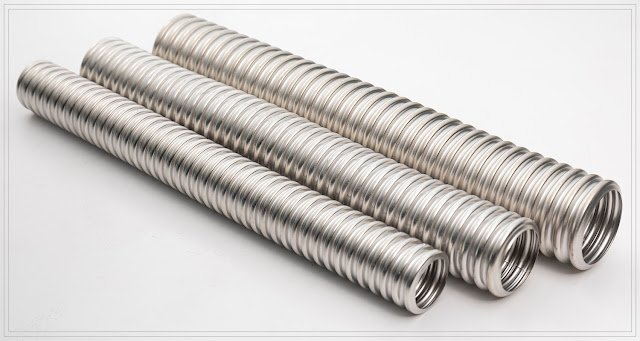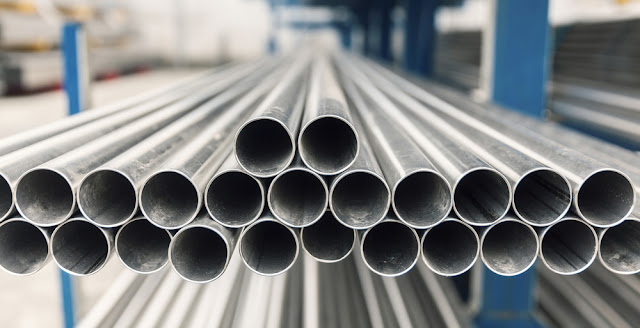However, the addition of nickel and molybdenum also makes grade 316 a more expensive alloy than stainless steel 304 per ounce of material.
Additionally, the melting point of grade 304 stainless steel is a bit higher than that of grade 316. The melting range of 316 is 2,500 °F – 2,550 °F (1,371 °C – 1,399 °C), roughly 50 to 100 degrees Fahrenheit lower than the melting point of grade 304 stainless steel.
Though the stainless steel 304 alloy has a higher melting point, grade 316 has a better resistance to chemicals and chlorides (like salt) than grade 304 stainless steel. When it comes to applications with chlorinated solutions or exposure to salt, grade 316 stainless steel is considered superior.
The Benefits of 316 Stainless Steel
Most stainless steel ordered around the world is Grade 304.
It offers the standard corrosion resistance, formability, strength, and easy maintenance for which stainless is known.
While 316 comes in second in terms of quantities sold, it offers vastly superior corrosion resistance to chlorides and acids.
This makes it popular for a wide range of environments—including:
- Medical equipment and implants
- Foodservice, processing, and preparation environments
- Coastal environments
- Areas with high salt levels (such as roadways)
- Brewing facilities
- Environments with increased exposure to alkalis and acids
These increased resistances also help to take the guesswork out of cleaning and allow you to clean your stainless more often using stronger cleansers and detergents with little worry of damage or altering the appearance of the stainless steel.
This makes 316 an ideal upgrade for environments with strict hygiene and cleanliness standards.
So Which is Better… 316 or 304 Stainless Steel?
With the benefits offered by 316 stainless steel, you might wonder why 304 remains the most popular…
If you’re not sure which to choose, consider these common uses for the two grades:
304 Stainless Steel
- Water piping
- Storage tanks
- Indoor electrical enclosures
- Wheel covers
- Automotive trim
- Kitchen equipment
- Appliances
- Decorative trim
316 Stainless Steel
- Chemical piping
- Pharmaceutical equipment
- Medical equipment
- Chemical equipment
- Stainless steel floats
- Structural steel and components in marine environments
- Commercial kitchen surfaces, equipment, and appliances
In short, it’s mostly about cost and corrosion resistance requirements.
If you don’t need the added resistance of 316, standard 304 grades will offer similar performance and longevity at a lower price point.
However, in situations where the added resistance is needed, 316 often improves the functional lifespan of the steel products by years.
This can lead to drastic long-term savings despite the initial increase in investment.
Looking for more information on the various traits and performance considerations surrounding other stainless steel grades?
By matching the grade of stainless to your intended usage and environment, you can optimize both the financial and physical benefits of your stainless steel investment.
What is Type 304 stainless steel and what’s it used for?
Type 304, with its chromium-nickel content and low carbon, is the most versatile and widely used of the austenitic stainless steels. Its alloys are all modifications of the 18% chromium, 8% nickel austenitic alloy. Type 304 proves to be resistant to oxidation, corrosion, and durability. All provide ease of fabrication and cleaning, prevention of product contamination offer a variety of finishes and appearances. Type 304 stainless steels are used in corrosion resistant electrical enclosures, auto molding and trim, wheel covers, kitchen equipment, hose clamps, exhaust manifolds, stainless hardware, storage tanks, pressure vessels and piping.
What is Type 316 stainless steel and what’s it used for?
Type 316 stainless steel is an austenitic chromium-nickel stainless and heat-resisting steel with superior corrosion resistance as compared to other chromium-nickel steels when exposed to many types of chemical corrodents such as sea water, brine solutions, and the like. Since Type 316 stainless steel alloy contains molybdenum bearing it has a greater resistance to chemical attack than 304. Type 316 is durable, easy-to-fabricate, clean, weld and finish. It is considerably more resistant to solutions of sulfuric acid, chlorides, bromides, iodides and fatty acids at high temperature. Stainless steels containing molybdenum are required in the manufacture of certain pharmaceuticals in order to avoid excessive metallic contamination. The bottom line is that Type 316 stainless steel costs a little more upfront but you could save a whole lot on the back end – especially if your enclosure is going to be used outdoors. Something worth keeping in mind when you’re designing your next enclosure.





Comments
Post a Comment